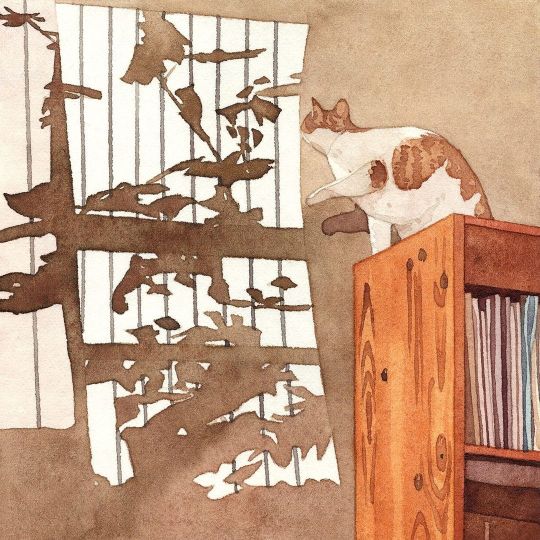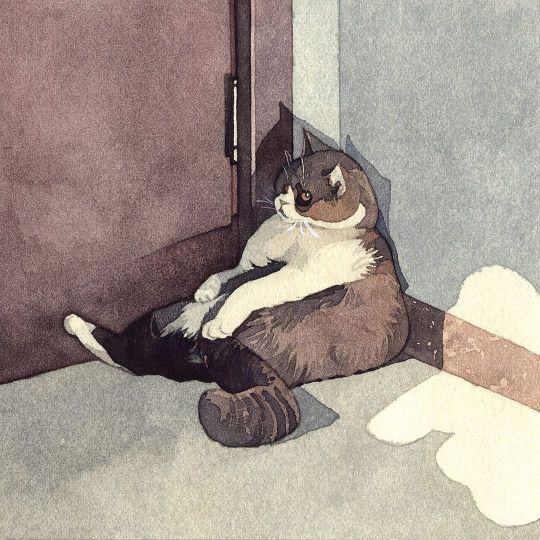taurus sun | capricorn moon | leo rising | horticulturalist | they/them | fiber artist | folk witch | solarpunk
Don't wanna be here? Send us removal request.
Text
@jackfrostsdaughter
I knitted a pink rat for a friend 🐀🩷


[Image description: a knitted rat with a bright pink body and pale pink inner ears, feet and tail. First image is a view of the front, second image is a view of the side. End ID]
361 notes
·
View notes
Text
this is gorgeous

dyed this bfl wool a couple days ago and I am soooo hyped to spin it once my wheel is clear
89 notes
·
View notes
Text
JUST BECAUSE THE WORLD IS CRUEL DOESNT MEAN I WILL BE!!!!!!! ITS OKAY 2 FEEL!!!!!
8 notes
·
View notes
Text
Fuck yeah I’ll be a maid of horticulture
at my wedding yes i will have a maid of honour but why stop there. ill give all my maids titles. we will have a maid of hope. a maid of horror. a maid of horticulture. a maid of harm. a maid of healing. and of course. a maid of hogs
89K notes
·
View notes
Text

I was thinking about making a rainbow spread based on the pride flag colours, but Interrobang Tarot beat me to it! Not only that, it's part of a free e-book with seven queer inspired spreads! Go check it out
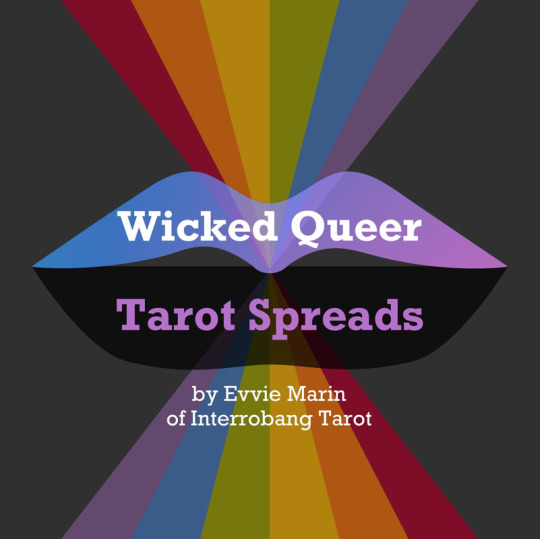
1K notes
·
View notes
Photo
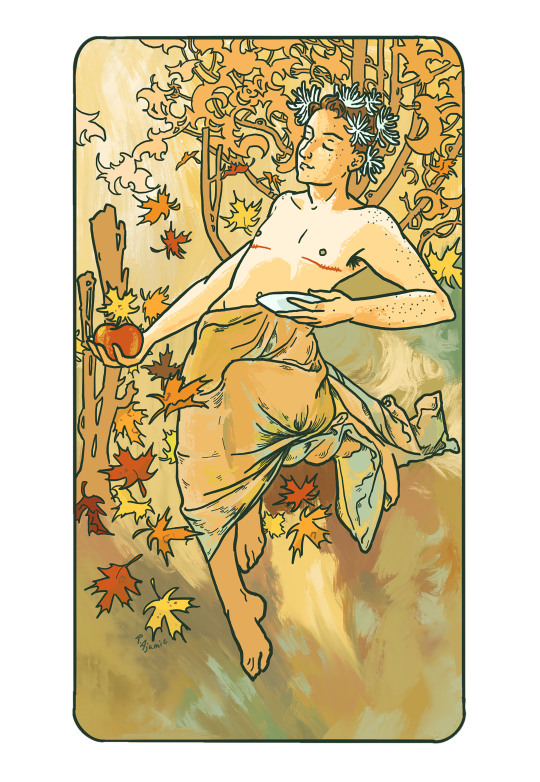

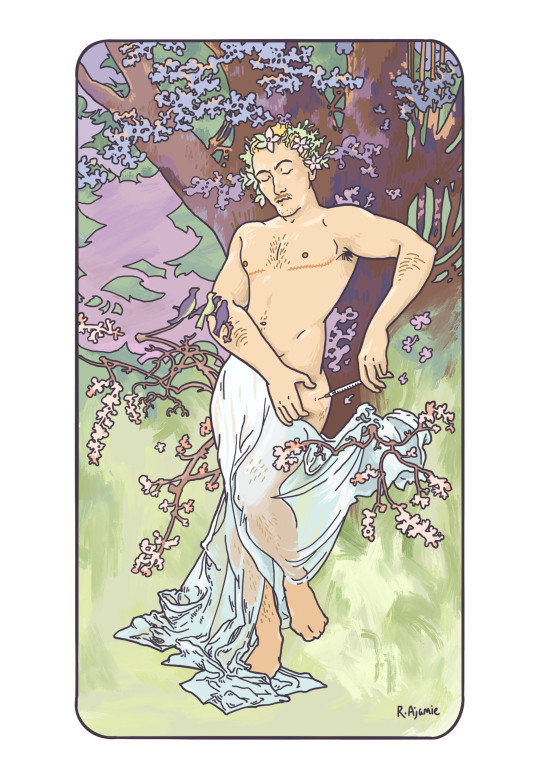
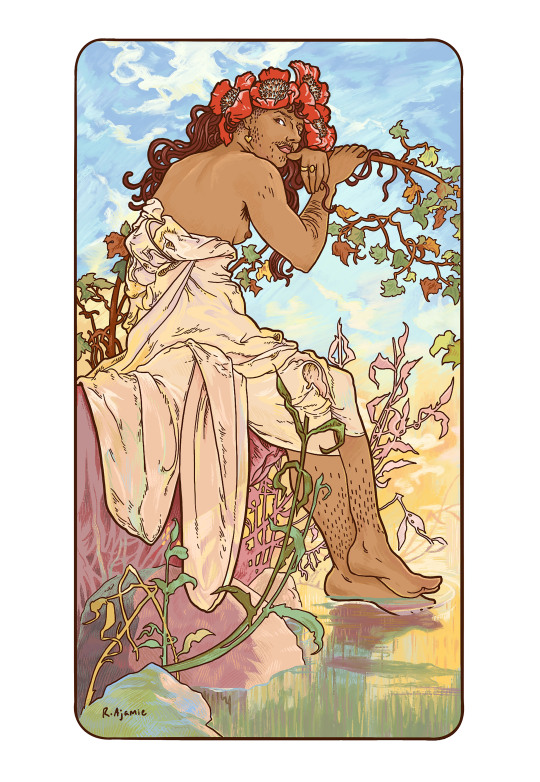
the (trans) seasons
prints at https://www.inprnt.com/gallery/rajamie/
9K notes
·
View notes
Text
The Month Of June Will Be
⊹ 𐙚 ⋆ full of blessings
⊹ 𐙚 ⋆ full of love
⊹ 𐙚 ⋆ full of happiness
⊹ 𐙚 ⋆ full of good physical health
⊹ 𐙚 ⋆ full of good mental health
⊹ 𐙚 ⋆ full of peace
⊹ 𐙚 ⋆ full of gratitude
⊹ 𐙚 ⋆ full amazing news
1K notes
·
View notes
Text
“she should be at the club” well i should be in the green house party paintings by salman toor


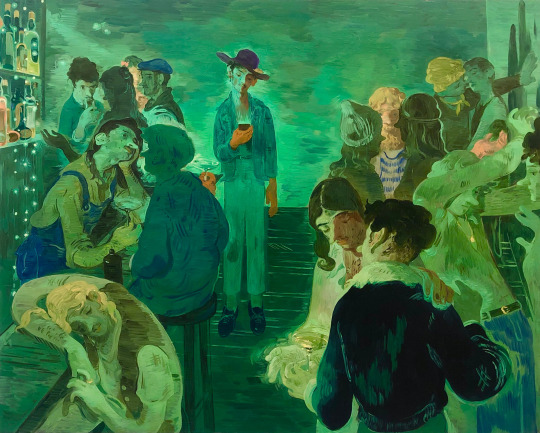


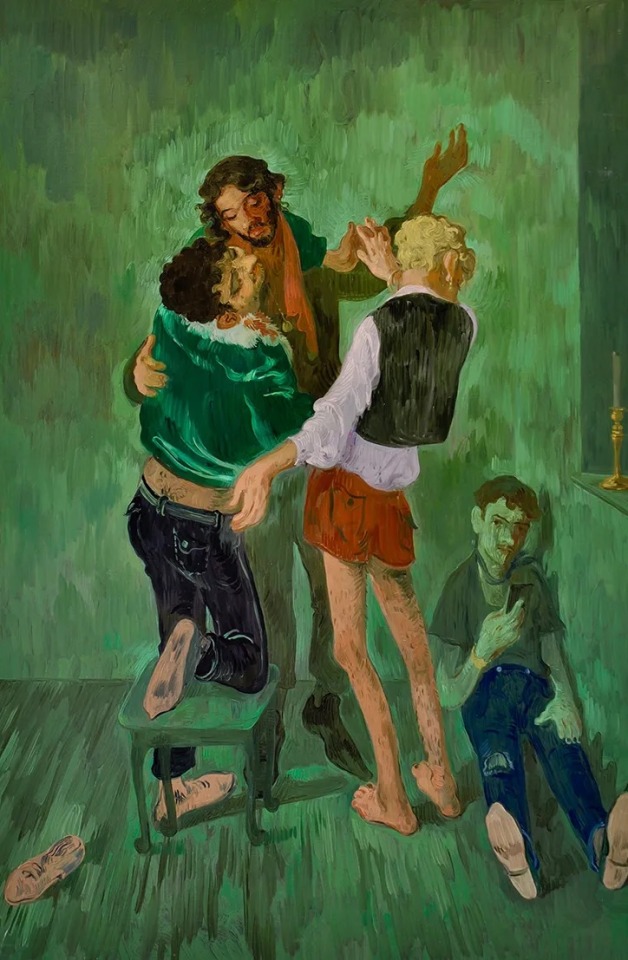
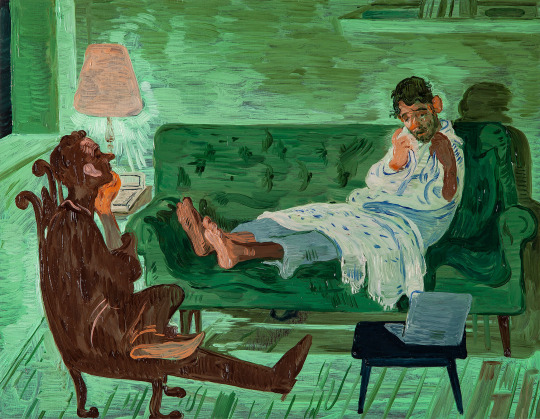

45K notes
·
View notes
Text
@jackfrostsdaughter

I want the rat coin purse
11K notes
·
View notes
Text
I haven’t read this yet but THANK YOU stuff like this is why I love tumblr I ask a question and get so much info!!!! Ur such a fucken peach I hope you have a great day I hope u hit every green light and ur bed is especially comfortable
@solarpunk-0possum asked for a guide on solar yarn dyeing and I wrote this up because I’m a nutcase. It’s long but hopefully informative.
Its actually really easy and there’s cool things you can do with it. Chemknits on YouTube has some fun projects too, their channel is the ultimate dye channel imo. But I’m going to give you a crash course here because I like doing that.
Let’s start with fiber.
For acid dyes it needs to be a protein based fiber, it can be a blend, so wool and nylon for example but depending on the fiber it may look slightly different. I almost exclusively use Wool2Dye4 platinum sock for my yarn base which is 75% super wash merino wool and 25% nylon but for more environmentally friendly dyeing, as super washing isn’t great, you can go non super wash wool or other natural protein based fiber. Paradise Fibers and KnitPicks also have white yarn bases. There are other companies but most won’t let you buy single skeins as they are geared toward commercial dyers. I buy in bulk cause I do a lot of dyeing.
If you get a non super wash wool yarn it can felt but this process minimizes that risk significantly. Handling it a lot, stirring or squeezing and temp changes are what cause wool to felt. I also dye 100% wool top and roving in many varieties with this same method. This technique is great for that because your felting risk is super low since you aren’t stirring or changing temps until you rinse and even then the temp change is a lot less and your fiber stays together.
If you do a fiber like silk it is going to react a lot differently so you want to play around to get the hue you want. Silk is notoriously tricky but gorgeous.
Plant based fibers need a different totally different dye and mordant though, I’ll get into that later but if you have a hemp, linen, bamboo or viscose or something you can still do this. Even synthetic fibers like white acrylic or nylon can be dyed just needs a different dye and I can’t speak to the efficacy of solar as I’ve never dyed them but nylon blend works so I don’t see why not.
Now to the dyes.
Acid reactive dyes are dyes that react and bind to fiber once acid is introduced to the party. I use white vinegar or citric acid. You can buy acid dyes from companies like Jacquard or Dharma Trading, there are several companies but these are my personal favs. Jacquard has a red, blue and yellow set that is great to start with as you mix your own colors using basic color wheel principles.
You don’t have to buy special dye though!!
You can dye with Kool Aid or Easter egg dyeing pellets or food coloring (gel or liquid), cake sprays, bath bomb colors etc. It just won’t be as color and light fast. But if you are just playing around it’s super fun and safe and I have skeins that kept their colors for years no issue. Also using those food based dyes can be done with children where I wouldn’t with acid dyes.
For acid dyes you want to use equipment that won’t ever touch food again, so you need specific jars and spoons and such that are just for dyeing. I have dedicated dyeing equipment (stock pot, crock pot, tongs, spoons, etc) but I purchased all of it at thrift shops for super cheap.
I also use a N95 mask or respirator whenever I open my dye powder jars to not breath in particulates. I also wear glasses or safety goggles. I wear a mask for ANY powder even Kool Aid. It’s just good PPE. I am bad about wearing gloves though….I should be better. Wear gloves.
For this project as far as equipment all you need are glass mason jars. I used 2quart so the yarn could move freely but 1quart or smaller will work too you just might need to put in less yarn. You also need plastic or paper cups to mix dye in if you are mixing. If you are using an acid dye or even a Kool Aid you need gloves, and a mask.
I do recommend a scale but it is not necessary, 1 tsp of acid dye is usually = 1 gram but check the manufacturer documentation. If you are using food coloring or Kool Aid you don’t need special dedicated stuff at all.
You will also need an acid like white vinegar or citric acid. Kool Aid, and PAS easter pellets or other powdered drink mixes usually have an acid in them so you can use them as is but I always add a little extra acid for better color adhesion.
For plant based fibers you need a fiber reactive dye and a mordant like soda ash or alum . Procion has a Pro MX line. You can also dye with natural materials like indigo, madder, onion skins, marigold, avocado etc. Some people recommend soaking or boiling your fiber in your chosen mordant but tbh I’ve done it just throwing everything in the jar and had good results so 🤷♀️. You can get soda ash and alum on Amazon or other sources like Dharma Trading. For plant based dyeing you just put the leaves or roots depending on the material in the jar with everything. Natural dyeing takes A LOT longer than acid or fiber reactive dyes for solar dyeing but it’s still fun and MUCH better for environment.
For synthetic fibers like acrylic you have to use something like Rit. I don’t do this very often (or at all really) and have never solar dyed acrylic as I just buy acrylic yarn in the color I want when I use it, but I assume it would work the same? I cannot guarantee it though. I’ve also seen people use acrylic paint mixed with water to dye yarn, it just changes the texture slightly so your mileage may vary with synthetics. I don’t recommend using them though. You can get 100% wool, linen, bamboo etc at craft stores pretty easily now a days.
So now that you have your dye and your fiber let’s get dyeing!
Prepping the Fiber
Weigh your yarn. You can use a kitchen scale. This will help you figure out how much dye to use to get the shade you want. This calculator for acid dyes is great for figuring out how much dye stock solution you need. For Kool Aid or Food Coloring it’s just vibes based for me but someone has probably figured out the amounts. We’ll get there.
To prevent tangling I recommend tying your yarn off in the skein at regular intervals. You can see my purple yarn ties in the pic below. I also use reusable zip ties. If you buy yarn the skeins usually come pre-tied but I skein up my own yarn so yeah. I also will put a zip tie or large piece of yarn at either end to keep it orderly. You can also just put entire cakes wound up from a ball winder, or an entire skein from the store in the jar too though, you’ll get different effects from the natural resist of it being wound up but it’s super fun to see what happens.
Soak your yarn, if you want more color variation you can do it dry, that’s often how tonals and semi solids are dyed as the dye binds or “strikes” to the fiber at different rates so feel free to experiment. You can also presoak your yarn in an acid and water mixture for different effects as well. It’s all about experimentation! Even your dye can do things differently depending on if the dye “breaks”, that’s where different pigments make up the dye and will strike at different temps, the Purple Pop I used in this example is a dye that will break into blues and reds or different purples if I do different things with the heat. For natural you can soak in your mordant like alum or soda ash. You probably want to get more detailed instructions on amounts though, I just look it up when I do it as I never remember and it takes me forever to gather enough plant material so it’s only a once or twice a year thing.
In this example I soaked my yarn in plain water for about 30 minutes before I added any dye as I was going for a solid.

While your yarn is soaking you can mix your dyes!
Mixing Dye:
If you are using acid dyes you can add your dye powder directly to the water you are dying in until it looks like you want. I dip pieces of paper towel into it to get an idea of what it looks like color wise, or what I do for greater precision with different color saturations and to not waste dye is mix a dye stock solution.
It sounds scarier than it is. A dye stock solution is suspending the dye molecules in water to make a concentration of dye. My dye stocks are 1 part to 100 for a 1% solution. So for Dharma dyes I mix 1 gram (1 part) to 100ml hot water (100 parts). Once I have my dye stock mixed I can use that to determine how many milliliters of dye I want to introduce to my yarn. The calculator I linked can tell you how much for the depth of shade you want but for an example if I want a mid saturation at 2% for a 50g skein I would use 100ml of dye stock. If I want a much lighter shade at .5% I would only use 25ml. If I want just the regular color at 1% I use whatever the fiber weighs in ml, so 50ml for a 50g skein. The skeins above are 2% of Sour Apple and Purple Pop except for the lighter green which was .5% of Sour Apple. If I wanted pastels I usually do like .025%.
The calculation is Weight of Fiber x Depth of Shade for a 1% dye stock solution. You can make stronger dye stocks like 2 grams per 100ml for a 2% but I find just using 1% much easier cause math is annoying but the calculator will let you do that too.
For Kool Aid or Food Coloring just mix your color in water and dip in pieces of paper towel until it’s approximately the shade you want. It’s not 100 accurate as paper towel is different than your fiber but is pretty close, or at least gives you an idea if you have a deep shade or a pastel shade. If it’s too dark add more water, too light add more dye.
For natural dye you can’t really determine what shade you’ll get as plants have too many variables, there are some general guidelines for most common dye materials that can give you an idea though and generally less material is lighter and more material is darker.
The Full Process:
Weigh your yarn if you are trying to get a more precise depth of shade. Then you can use the calculations above to determine how much dye. If you are just playing you can skip this. If you bought skeins they usually tell you if it’s 100g or 25g etc so no need to weigh.
I filled my jars with plain water and put the yarn in (make sure it’s loose, I made the mistake with my first batch last weekend of accidentally leaving it twisted in the skein and it formed a resist, I just overdyed and still got some pretty skeins so nothing lost but if you want white spots or different depts of shade throughout feel free to add some resist by leaving it skeined or tying off sections like tie dye!).
When filling your jars remember we need room at the top to add dye and acid so just fill until the yarn moves freely, you can always top it off after. Can you tell I’ve made this mistake?
I let it soak for about 30 minutes while I prepared my dye stock.
Once my dye was mixed and my yarn had soaked I determined how much dye I wanted to use. Then just add the dye into the jar. I let my yarn sit in the dye without acid for another 30 minutes. I put the lid on and shook it up to make sure it penetrated all the yarn. Again, if you want different effects you can add the acid in now, don’t mix it, etc but for a solid you want as even coverage as possible.
Then I added the acid. I used 1/4 cup acid cause that’s what I always use for some reason but you can add just 1 or 2 tablespoons. I used white vinegar. I usually use a citric acid mix with water but I ran out. It doesn’t matter the vinegar smell fades.
I put my lid on, gave it a good mix and I was done. Now for the sun part.

What makes the dye bond to fiber is a proportion of acid, heat and time. With kettle dyeing in a pot on the stove or similar you introduce heat rapidly but in this case it’s not so much about the temp as it is the UV and time. You don’t have to put your jars in direct sunlight outside, a sun facing window is fine too. Your jars do need to be clear though.
I put mine outside. You can still solar dye if it’s overcast or even if it’s kinda cold it just might take more time.
Then just leave it! You’ll know it’s done when the water is clear, the yarn can make it appear like it’s not clear but pool it at the top of the jar to check on it.
This is called exhausting the dye, all the dye molecules have found a friend in the fiber and adhered to it. Some dyes do not exhaust completely, either because there is too much dye for the weight of fiber and all the molecules have already found their friend, or because of the dye itself. The Purple Pop is really bad about exhausting. If it’s been several days and you aren’t seeing a change it may be done, in that case just take your yarn out but add another skein in with some more acid, no need to waste it, you’ll get a lighter shade. I usually have a yarn mop for collecting non-exhausted dye. I just throw it in and see what happens, sometimes with many different colors.
The length of time you leave it out depends on a lot of factors, natural plant based dyes can take months, these acid based dyes took two days in Central FL but honestly the greens were exhausted in like 18 hours and the purple I didn’t see any change so I just took it out and put another skein in, its cooking now. I usually give my acid or Kool Aid dye projects no more than a week cause I’m impatient and always have had good results. Plant based I’ll leave for months.
After you remove your yarn you can dump the water. If I dump it outside I add a little baking soda to neutralize the acid, or just let it sit for awhile. I don’t like to dump it near water sources like wells or any food based gardens but have used it to water flowers and stuff. If using Kool Aid or food coloring you can do whatever. I’ve also reused my water for another dye if it’s totally clear or if I don’t care if there’s a bit leftover.
Then wash and rinse your yarn! I use Kookabura Wool Wash but you can use anything like Dawn dish soap. You may have a bit of bleeding depending on the color or none at all, just rinse and repeat until the water runs clear. If it’s a lot of bleeding and you are washing and rinsing and it just won’t run clear you can steam set it by wrapping it in plastic wrap while still wet and microwaving it or steaming it in a steamer basket like you would a vegetable. If you microwave just don’t burn your yarn! I do like 30 second intervals in the microwave until it’s hot to the touch but I rarely have to do this.
For non super wash wool or wool top/rocing that will felt you need to do this gently. Don’t run water directly on the fiber, handle it as little as possible, don’t introduce extreme temperature changes etc. The temp is less of a concern for solar though, that mostly applies to kettle where you go from hot to cold.
Then hang to dry! If you tied off your skein it should be tangle free, but you may need to shake or comb it a bit to get rid of curly bits. I use a dedicated salad spinner to really get it dry first then hang and it’s usually totally dry in a few hours.
And that’s it! Hope this helped, sorry it’s so long.
5 notes
·
View notes
Text
This is super cool!!! Do you have a guide for solar dyeing? I live in a place with a lot of sun and I think this would be super cool to try
Lovely Mother’s Day where everyone just left me alone to do fiber dyeing experiments and listen to music. About to eat a steak with mushroom and onions and twice baked potatoes and then StarDew Valley until bed.
I haven’t dyed any fiber since Christmas and was trying a new small batch process using canning jars so I made a bunch of dumb mistakes with the first batch. I’m wanting to do 3 values of each of my dyes so I have a full range for punch needle projects but instead accidentally forgot to unwind my skeins so they had a resist and then I just started mixing dyes for fun. I can always over dye the ones that come out bad. But from what I saw most came out very pretty anyway.
After that I changed the plan and decided that since my hot plate was having a hard time getting up to temp (like hours stuck at 160), uses a ton of water and energy and I’m just doing solids anyway to just solar dye them. It was so much better, now I only use enough water to cover the yarn, I can mix in the jar and just let the FL sun handle the temp. I’ll just keep doing that for each dye until I have the whole set done, which will take a few weeks but I’m excited.
Here is a fun shot of Purple Pop dispersing.
18 notes
·
View notes
Text
Nonbinary vent time - as in I am nonbinary and want to vent about nonbinary things.
I'm running across AFAB nonbinary folks using the term "femme" for themselves when their presentation is not feminine to then talk about issues of being assumed female/feminine.
While I do not agree with the idea that femme can only be used in the cases of butch/femme lesbian dynamics since it also has a long history in the gay community as well - it has generally always referred to people with a feminine presentation.
My guess is that this is a way to avoid saying AFAB. We can debate the pros and cons of AGAB all day - but if avoiding it leads to folks taking language away from already marginalized groups and using them in ways that are basically counter to their meaning that's gonna be a hard pass from me.
There are issues specific to feminine presentation. Let those folks have a word for that - they already face enough bullshit as it is.
If you don't have a feminine presentation want to talk about issues related to being perceived female - that is not the same as being a femme. You can say "being perceived female" when talking about those issues.
If you are literally talking about issues related to your assigned gender, don't be afraid to talk about, you know, your assigned gender. There are issues that come up from these. Its a part of all of our history and it doesn't go away just because we don't identify with it. Use the language.
The aversion to using AGAB seems to largely be rooted in not wanting to let other people categorize us by that means but means that folks are hurting folks in their communities to avoid hurt from people out of their communities.
Let's just not.
27 notes
·
View notes
Text
they thells she shells by the he whore
30K notes
·
View notes



